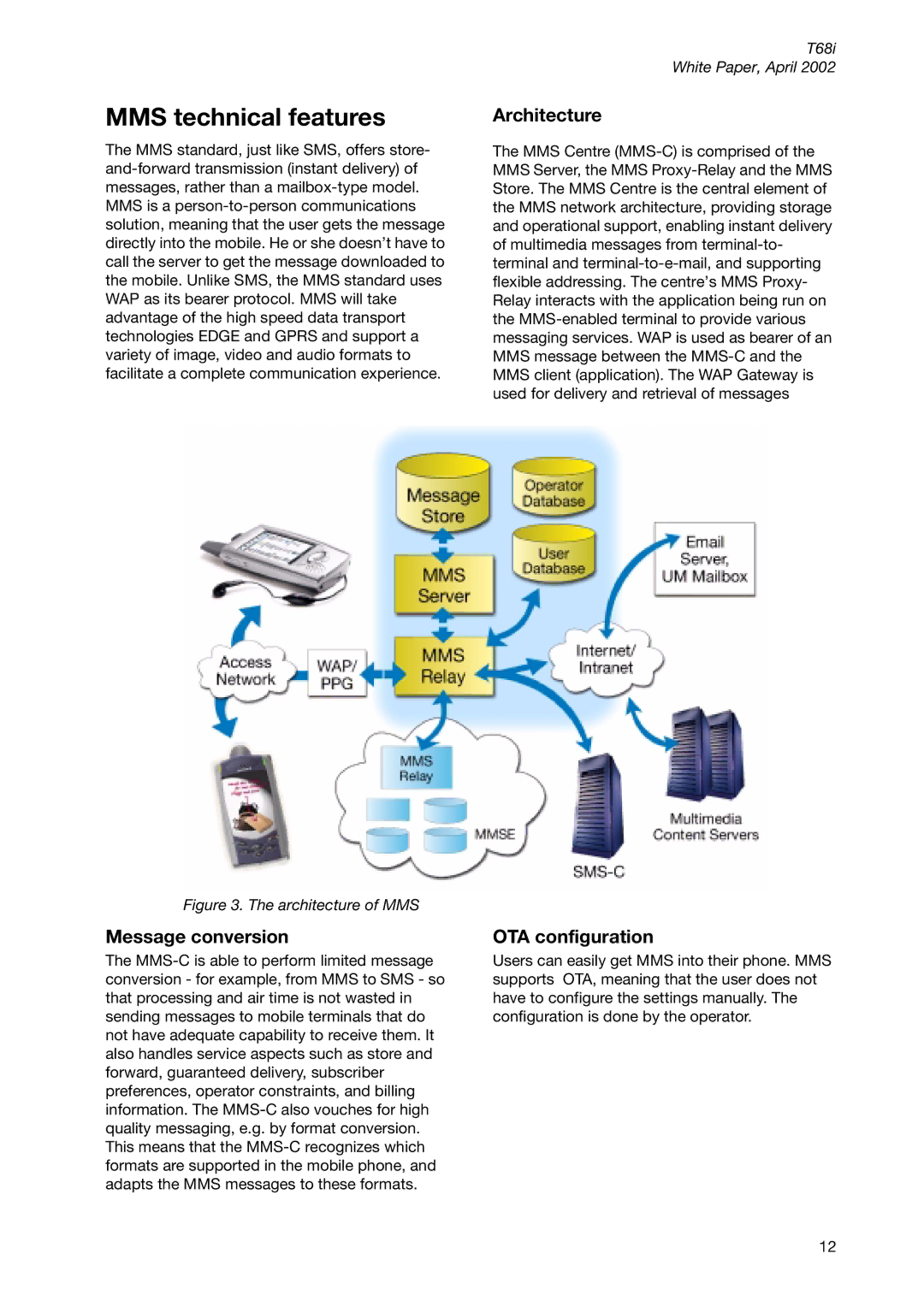
MMS technical features
The MMS standard, just like SMS, offers store-
Figure 3. The architecture of MMS
Message conversion
The
T68i
White Paper, April 2002
Architecture
The MMS Centre
OTA configuration
Users can easily get MMS into their phone. MMS supports OTA, meaning that the user does not have to configure the settings manually. The configuration is done by the operator.
12
